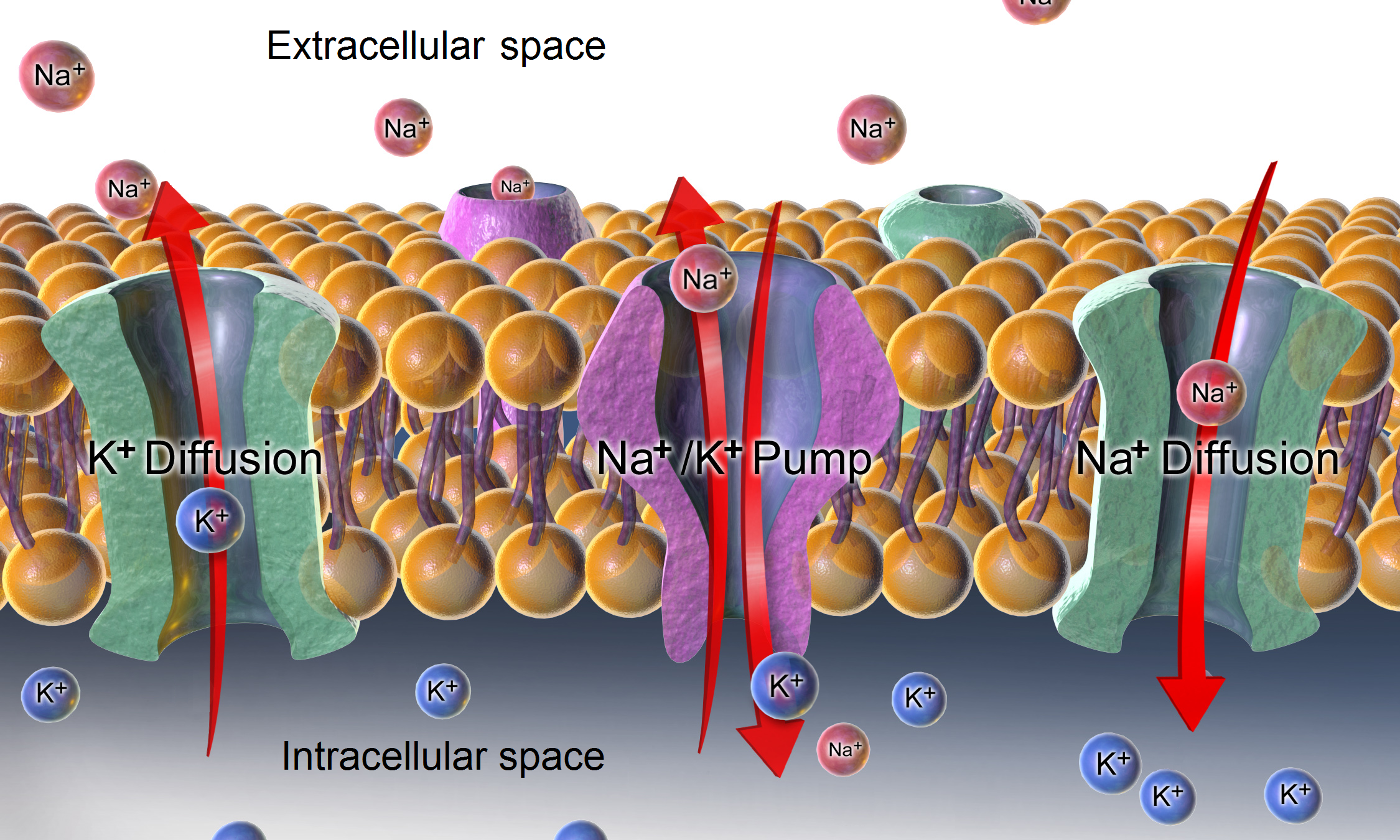Introduction to Neurophysiology: Difference between revisions
No edit summary |
No edit summary |
||
| Line 50: | Line 50: | ||
<br> | <br> | ||
[[Image:Sodium- | [[Image:Sodium-potassium pump and diffusion.png|frame|left|Sodium-Potassium pump Bruce Blaus]] | ||
<br> | <br> | ||
<br> | |||
*hello | |||
== Neuromuscular Junction/ Synapses == | == Neuromuscular Junction/ Synapses == | ||
Revision as of 15:23, 29 February 2016
Original Editor - Joanne Garvey.
Top Contributors - Joanne Garvey, Lucinda hampton, Kim Jackson, Rachael Lowe, Naomi O'Reilly, Tarina van der Stockt, WikiSysop, Simisola Ajeyalemi, Jess Bell and Admin
Ion Channels[edit | edit source]
- An ion channel is a protien macromolecule that crosses the breadth of a membrane and allows molecules to pass through. The ions move in a direction determined by the electrochemical gradient across the membrane.
- Ions tend to flow from an area of high concentration to an area of low concentration.
- In the presence of a voltage gradient, there may be no flow of ions depite unequal concentrations.
- Ion channels can be open or closed.
- Opening is brought about by changing the voltage across the membrane, or binding a chemical substance to a receptor.
- Most important role is that they provide the neuron with electrical excitability.
- Found in all parts of the neuron and to a lesser extent in the neuroglial cells.
Types of channel
- Voltage gated
- Chemically Activated
- Mechanical stretch/pressure.
Fundamental properties of an Ion Channel.
- It is made up of a number of protien sub units, sitting across the membrane, allowing ions to cross from one side to the other. (Transmembrane pore)
- The channel must be able to move from open to closed state, and back.
- Must be able to open in response to the appropriate stimuli.
Some channels respond to chemical stimulus (particularly at the synapse). These channels have specific receptors for that chemical, that leads to channel opening.
Resting Membrane and Action Potential[edit | edit source]
- In the resting state, the neuronal cell membrane is fairly impermeable to ions. This is crucial for the generation of theresting membrane potential.
- The major intracellular ion is Potassium (It is sodium in the extracellular fluid).
- The natural flow of ions by way of their concentration gradients is for K+ to leave the cell and Na+ to enter.
- This movement of ions out of the cell leads to a negative membrane potential - Hyperpolarisation.
- The opposite is true for a relative influx of ions - Hypopolarisation.
- hello
Neuromuscular Junction/ Synapses[edit | edit source]
Nerve Conduction[edit | edit source]
Neurotransmitters, receptors and pathways[edit | edit source]
Sensory Systems[edit | edit source]
Motor Systems[edit | edit source]
Recent Related Research (from Pubmed)[edit | edit source]
Extension:RSS -- Error: Not a valid URL: Feed goes here!!|charset=UTF-8|short|max=10
References[edit | edit source]
References will automatically be added here, see adding references tutorial.







